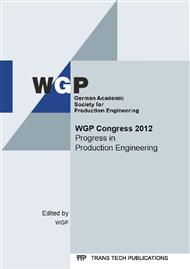p.391
p.405
p.417
p.427
p.439
p.455
p.463
p.475
p.489
Factory Carbon Footprint Design
Abstract:
Energy consumption and emissions are the two main sustainability issues of German companies. The main reasons for efficiency increase and emission reduction are not, as often proclaimed, energy costs, but the demands of customers and legislators for low carbon emissions. Particularly at machine level and process chain level various methods for analysis and improvement of the energy efficiency already exist. At factory level there is no systematic approach. The method Factory Carbon Footprint Design is an appropriate tool for that issue. The method is derived from the activity-based costing method and has two main parts: The Activity-based Carbon Footprint Accounting and the Target Carbon Footprint Design. Using the Activity-based Carbon Footprint Accounting, the carbon footprint of all energy consumers can be allocated to the goods produced in the factory. This contains not only the carbon footprint of the manufacturing machines, but also the periphal equipment and the administration and other indirect parts of the factory. The Target Carbon Footprint Design is a systematic approach to reduce the overall carbon footprint of a factory.
Info:
Periodical:
Pages:
455-462
Citation:
Online since:
April 2014
Authors:
Keywords:
Price:
Сopyright:
© 2014 Trans Tech Publications Ltd. All Rights Reserved
Share:
Citation:


